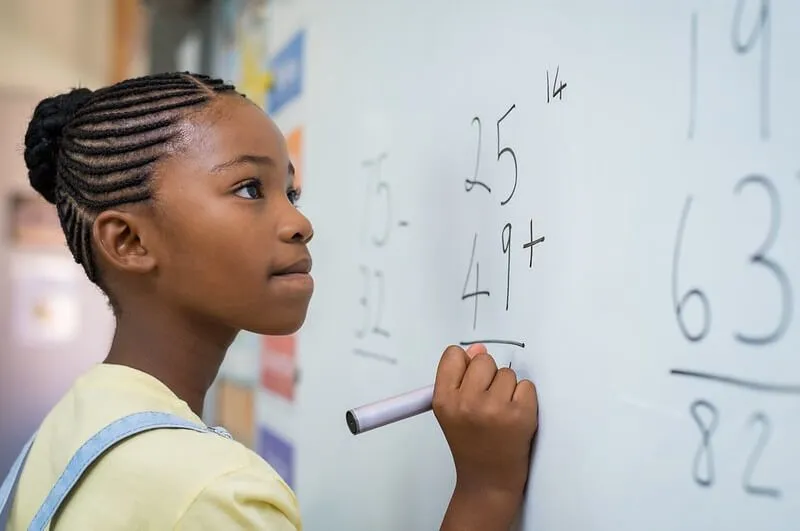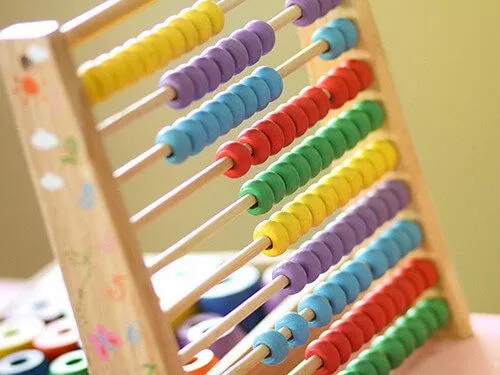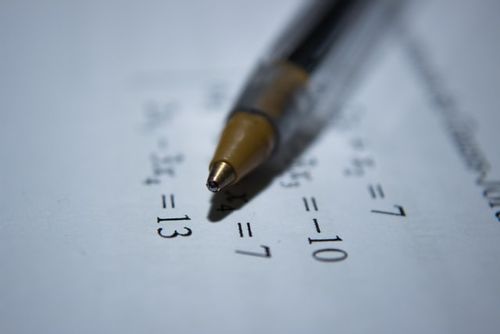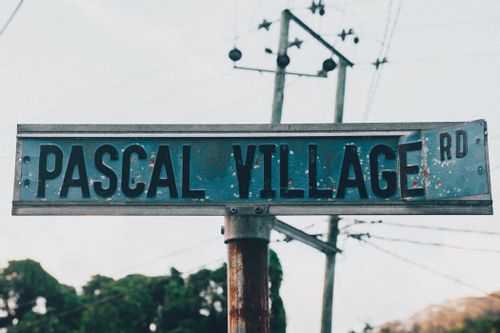FOR ALL AGES
If you have ever felt confused when your child has asked for help with partitioning numbers in KS2 maths, then this is the guide for you.
Partitioning numbers is a mathematical method for working out maths problems that include large numbers (two-digit numbers or higher), and it has been designed as an alternative to the column method. This makes it easier to complete the problem by splitting the larger values into smaller units. Read on to understand how partitioning works, when your child should use it and how to help teach this method.

Partitioning involves breaking large numbers into smaller more user-friendly units before performing the addition, subtraction, multiplication or division. An example of partitioning can be shown using the following sum: 89 + 37 = 126
Children are encouraged to partition each of these numbers into smaller, easy-to-handle numbers: 80 + 9 + 30 + 7
And then to group them in a way that makes it easier to complete the sum: (80 + 30 = 110) + (9 + 7 = 16) = 126
You can partition numbers for multiplication using the same method, simply split the large number into smaller units, and multiply both parts before adding them back together again. For example: 89 x 7 = 623
When partitioned, this sum becomes (80 x 7) + (9 x 7) = 560 + 63 = 623
Teaching maths in this way offers children different ways to visualise the problem, making it easier to do mental arithmetic with larger numbers. Children learn this maths method during Key Stage 1, where they are encouraged to break a two-digit number into tens and ones. Children in Key Stage 2 will then break down bigger units, turning three-digit numbers into hundreds, tens and ones - at this point, pupils must have a good understanding of place value, which is the value of each digit within a number (i.e. in 597, the 5 stands for 500, the 9 stands for 90).

There are lots of free resources online, including a huge range of games with place value lessons at their core. Playing a place value game is a great way to get children to practice this core maths technique, as well as being an opportunity for further teaching at home. Simply search 'games for place value' and choose from one of the many online resources!
Read The Disclaimer
At Kidadl we pride ourselves on offering families original ideas to make the most of time spent together at home or out and about, wherever you are in the world. We strive to recommend the very best things that are suggested by our community and are things we would do ourselves - our aim is to be the trusted friend to parents.
We try our very best, but cannot guarantee perfection. We will always aim to give you accurate information at the date of publication - however, information does change, so it’s important you do your own research, double-check and make the decision that is right for your family.
Kidadl provides inspiration to entertain and educate your children. We recognise that not all activities and ideas are appropriate and suitable for all children and families or in all circumstances. Our recommended activities are based on age but these are a guide. We recommend that these ideas are used as inspiration, that ideas are undertaken with appropriate adult supervision, and that each adult uses their own discretion and knowledge of their children to consider the safety and suitability.
Kidadl cannot accept liability for the execution of these ideas, and parental supervision is advised at all times, as safety is paramount. Anyone using the information provided by Kidadl does so at their own risk and we can not accept liability if things go wrong.
Kidadl is independent and to make our service free to you the reader we are supported by advertising.
We hope you love our recommendations for products and services! What we suggest is selected independently by the Kidadl team. If you purchase using the buy now button we may earn a small commission. This does not influence our choices. Please note: prices are correct and items are available at the time the article was published.
Kidadl has a number of affiliate partners that we work with including Amazon. Please note that Kidadl is a participant in the Amazon Services LLC Associates Program, an affiliate advertising program designed to provide a means for sites to earn advertising fees by advertising and linking to amazon.
We also link to other websites, but are not responsible for their content.
Was this article helpful?



Browse Category



We’ll send you tons of inspiration to help you find a hidden gem in your local area or plan a big day out.



Check your inbox for your latest news from us. You have subscribed to:
Remember that you can always manage your preferences or unsubscribe through the link at the foot of each newsletter.